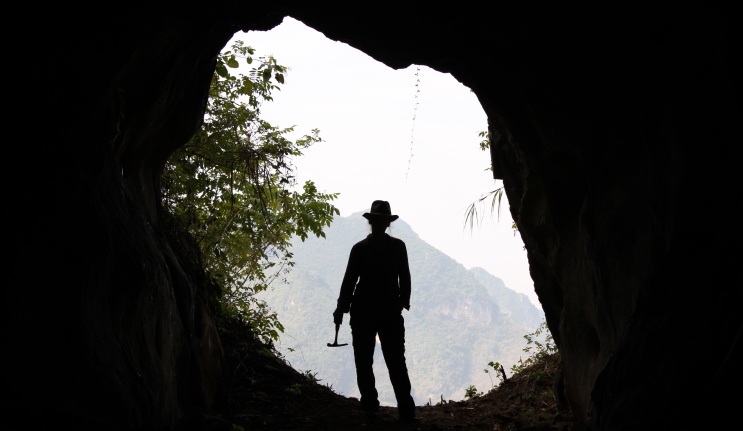
RESEARCH NEWS
It’s about time
Timing is everything, and nowhere is this more so than in the groundbreaking work of Dr Kira Westaway, Director of ‘Traps’ MQ Luminescence Dating Facility. “Dating has become a game changer. It goes from being a rock to something significant in our understanding of human history,” says Westaway.
“There are no records for prehistory, but with the light-sensitive dating method optically-stimulated luminescence (OSL), we can fill in exact moments in time. It’s almost like you are reliving time.”
Filling in the detail and creating a linear story around important events like the extinction of the largest ever primate Gigantopithecus blacki in southern China, or redating Liang Bua cave on the island of Flores, Indonesia, to establish a correct age for Homo floresiensis (the ‘hobbit’), is more than a date in time for Westaway. “Story is so important”, she says.
By knowing exactly when events happened, she is able to start to answer the larger questions concerning evolution and the dispersal of humans, as well as fauna, in the landscape. Westaway is interested in understanding how primates fit into the evolutionary puzzle or how they died out and, arguably more interesting, what is so special about us that we didn’t become extinct.
“That’s why I love it; it’s such a challenge. We’re only just scratching the surface of our understanding.”
Even so, Westaway’s work is yielding information and providing context that is making significant advances in our understanding of when humans first arrived in South-East Asia, as well as in Australia, and when significant tools and art were made.
Exciting developments, especially when you are able to take grains of sand from fossilised mud wasp nests on Aboriginal rock art and test the grains using OSL to establish the antiquity of the art, or to place the original occupation of Australia earlier than previously accepted.
This cutting-edge technology is so effective because it tests inorganic material, which means it can be used on any sediment environment anywhere in the world. Samples from the deep, dark depths of time are literally seeing the light for the first time in a very long time – that is, in the lab.
Westaway says, “Being able to date within a range of 100 years up to 800,000 years ago from minerals such as quartz and feldspar is amazing – it allows you to go back in time much further than radiocarbon dating.”
It’s all part of our shared story that Westaway is bringing to light.
Dr Kira Westaway received an award in the recent Vice-Chancellor’s Learning and Teaching Awards and the Research Excellence Awards. A geochronologist and quaternary scientist, she establishes chronologies and reconstructs palaeoenvironments for archaeological sites in Asia and Australasia.